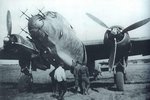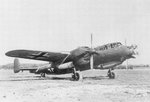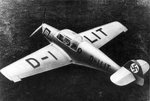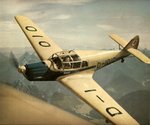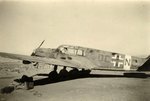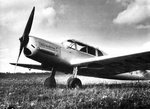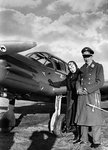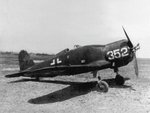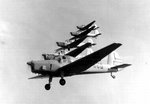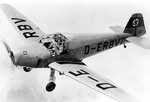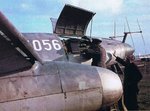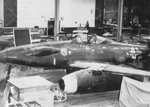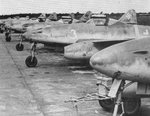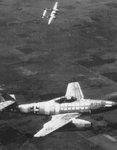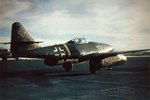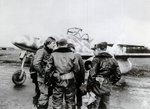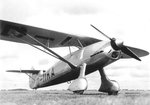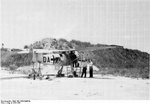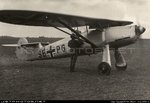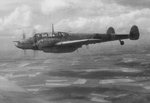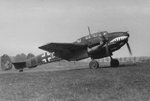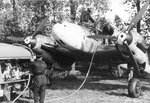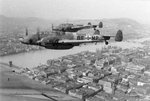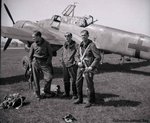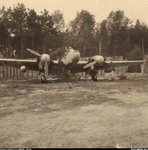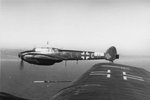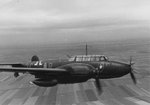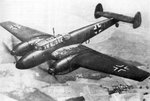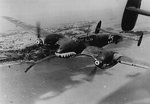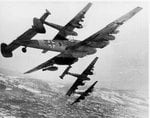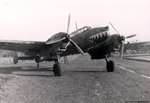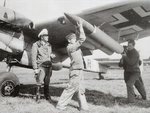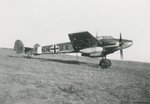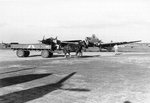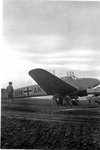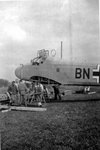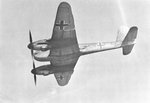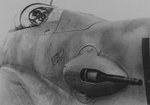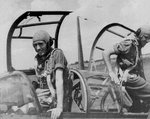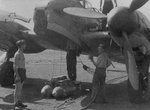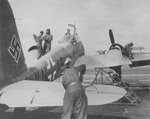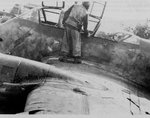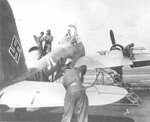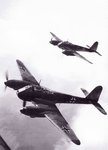- Thread starter
- #21
The Fiat G.55 Centauro (centaur) was and all metal low wing monoplane single seat fighter designed by Giuseppe Gabrielli, and represented a great improvement by comparison with the previous Fiat monoplane fighter to go into production, The G.50 Freccia. Great care was taken to blend an aerodynamically advanced airframe with a structure which was robust and would lend itself to mass production. Its configuration included a fully retractable landing gear and a raised cockpit providing an excellent view. Fast and manoeuvrable, the type proved popular with its pilots. The first of three prototypes was flown on 30 April 1942. The third (MM 493) was the only to carry armament, comprising one engine mounted cannon and four fuselage mounted machine guns. It was evaluated under operational conditions from March 1943, but by then the Italian air ministry had already decided on mass production of the G.55. However, only 16 G.55/0 pre-production and 15 G.55/I initial production aircraft had been delivered to the Regia Aeronautica by September 1943, production thereafter being for the Fascist air arm flying alongside the Luftwaffe. Before wartime production ended 274 more were completed and a further 37 were abandoned at an advanced construction stage.
Before the armistice of September 1943, G.55s had participated in the defence of Rome with the 353 Squadriglia of the Regia Aeronautica. The post armistice operations were mainly with the Fascist air arm's Squadriglia 'Montefusco' based at Veneria Reale, then with the three Squadriglie which formed the 2nd Gruppo Caccia Terrestre, but losses were heavy, as a result mainly of Allied attacks on the airfields. While the war was still in progress, Fiat flew two prototypes of the G.56, which developed from the G.55 to accept the more powerful Daimler Benz DB 603A engine. Built during the spring of 1944 they incorporated minor structural changes and had the fuselage mounted machine guns deleted. The first prototype survived the war and was used subsequently by Fiat as a testbed.
Fiat reinstalled the G.55 assembly line after the war, using wartime manufactured assemblies and components to produce the G.55A single seat fighter/advanced trainer of which the prototype was first flown on 5 September 1946. If differed from the G.55 only in instrumentation and armament. The armament comprised of either two wing mounted plus two fuselage mounted 12.7 mm (0.50 in) machine guns, or two 20 mm Hispano-Suiza cannon plus two fuselage mounted 12.7 mm (0.50 in) machine guns. The Italian Aeronautica Militaire procured 19 G.55As and 30 were supplied to Argentina, which returned 17 in 1948 for resale to Egypt, these being armed with four 12.7 mm (0.50 in) Breda-SAFAT machine guns. A two seat advanced trainer variant of the G.55 had been flown in prototype form on 12 February 1946 under the designation G.55B. The Italian Aeronautica Militaire aquired 10 of these, and 15 were sold to Argentina in 1948.
Source: Fiat G.55 I Centauro
Before the armistice of September 1943, G.55s had participated in the defence of Rome with the 353 Squadriglia of the Regia Aeronautica. The post armistice operations were mainly with the Fascist air arm's Squadriglia 'Montefusco' based at Veneria Reale, then with the three Squadriglie which formed the 2nd Gruppo Caccia Terrestre, but losses were heavy, as a result mainly of Allied attacks on the airfields. While the war was still in progress, Fiat flew two prototypes of the G.56, which developed from the G.55 to accept the more powerful Daimler Benz DB 603A engine. Built during the spring of 1944 they incorporated minor structural changes and had the fuselage mounted machine guns deleted. The first prototype survived the war and was used subsequently by Fiat as a testbed.
Fiat reinstalled the G.55 assembly line after the war, using wartime manufactured assemblies and components to produce the G.55A single seat fighter/advanced trainer of which the prototype was first flown on 5 September 1946. If differed from the G.55 only in instrumentation and armament. The armament comprised of either two wing mounted plus two fuselage mounted 12.7 mm (0.50 in) machine guns, or two 20 mm Hispano-Suiza cannon plus two fuselage mounted 12.7 mm (0.50 in) machine guns. The Italian Aeronautica Militaire procured 19 G.55As and 30 were supplied to Argentina, which returned 17 in 1948 for resale to Egypt, these being armed with four 12.7 mm (0.50 in) Breda-SAFAT machine guns. A two seat advanced trainer variant of the G.55 had been flown in prototype form on 12 February 1946 under the designation G.55B. The Italian Aeronautica Militaire aquired 10 of these, and 15 were sold to Argentina in 1948.
Source: Fiat G.55 I Centauro








